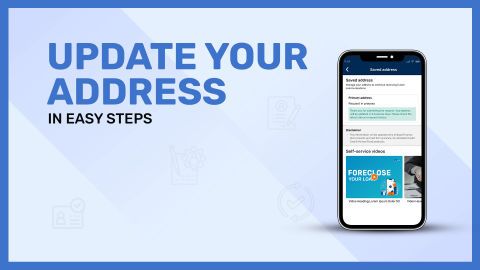Why choose digital payment modes for medical equipment loan?
In today’s fast-paced world, digital payment modes have transformed the way loans, including medical equipment loans, are processed and repaid. As healthcare facilities and professionals increasingly seek flexibility and convenience, digital payment options have emerged as a game-changer. There are several compelling reasons why opting for digital payment modes for medical equipment loans is beneficial.1. Convenience and accessibility
One of the most significant advantages of digital payment modes is the convenience they offer. Borrowers no longer need to visit the bank or physically write checks to make payments. Payments can be made with just a few clicks from anywhere, anytime, through internet banking, mobile apps, or digital wallets. This accessibility ensures that payments are made on time, reducing the risk of penalties or delays.
2. Faster transactions
Traditional payment methods, such as bank drafts or checks, can take time to process, especially when dealing with large sums of money. Digital payments, on the other hand, are almost instantaneous, ensuring that medical equipment loan repayments are processed quickly. This allows borrowers to stay on top of their payment schedule, avoiding unnecessary complications.
3. Enhanced security
Digital payment platforms often come equipped with advanced security features such as two-factor authentication (2FA) and encryption, ensuring that transactions are safe and secure. For medical professionals and healthcare organizations, where large sums of money are involved, security is a priority. Digital payment modes offer robust security protocols that safeguard sensitive financial information from fraud or unauthorised access.
4. Easy tracking and management
With digital payment methods, tracking loan repayments becomes easier. Most platforms provide detailed transaction history, helping borrowers manage their financial obligations more efficiently. Borrowers can monitor upcoming due dates, set reminders, and even automate payments, ensuring that they never miss a payment. This level of transparency also makes it easier to maintain proper financial records, which can be helpful during audits or tax filings.
5. Flexible payment options
Many digital payment platforms allow users to customize payment dates, amounts, and even choose different payment modes like recurring payments, ensuring that the loan repayment schedule aligns with the borrower’s cash flow. These flexible options help borrowers manage their finances better and prevent financial strain, especially in the healthcare industry, where revenue cycles can be unpredictable.
6. Better loan terms
In some cases, lenders may offer better loan terms or reduced interest rates for borrowers who opt for digital payment methods. This is because digital transactions reduce administrative costs for the lender, which may translate into more favourable loan conditions for the borrower.
Benefits of digital payments for medical equipment loan repayment
Digital payment methods are revolutionising the way medical equipment loans are repaid. With numerous advantages, these payment options provide both borrowers and lenders with greater flexibility, efficiency, and security. Below are the key benefits of using digital payments for medical equipment loan repayment:1. Enhanced convenience
Digital payment methods allow borrowers to make payments anytime, from anywhere, without the need to visit the bank or financial institution in person.
Payments can be made via mobile apps, online banking, or digital wallets, offering ultimate convenience for medical professionals and healthcare facilities on tight schedules.
2. Quick and instant transactions
Unlike traditional methods, digital payments are processed almost instantly, ensuring that repayments are made promptly.
This eliminates the delay associated with checks or bank transfers, which can take days to process, ensuring smoother loan management.
3. Flexibility in payment options
Digital payment systems offer various payment options such as automated recurring payments, pay-per-use, or flexible payment schedules, allowing borrowers to choose the method that suits their financial situation.
This flexibility helps ensure that repayments are manageable and aligned with cash flow patterns in healthcare businesses.
4. Improved financial tracking and record-keeping
Digital payments provide a detailed record of every transaction made, making it easy to track repayments and keep accurate financial records.
Borrowers can quickly check payment history, outstanding balances, and upcoming due dates, which aids in better loan management and financial planning.
5. Reduced risk of missed payments
Digital payment platforms allow borrowers to set up automated payments or reminders, reducing the risk of missed or delayed payments.
Automating repayments ensures that healthcare facilities and professionals maintain a consistent payment schedule, preventing late fees or damage to their credit score.
6. Increased security and fraud protection
Digital payment systems are equipped with advanced security features such as encryption, multi-factor authentication (MFA), and fraud detection, ensuring the safety of financial transactions.
Sensitive financial information is protected from unauthorised access, providing peace of mind to borrowers.
7. Cost-effective transactions
Digital payments are generally more cost-effective compared to traditional payment methods, as they eliminate the need for paper checks, mailing costs, and administrative overheads.
Lenders often pass on the savings from reduced operational costs to borrowers, leading to better loan terms and lower fees.
8. Greater loan transparency
With digital payments, borrowers can access real-time information on their loan balance, payment history, and interest charges.
This transparency helps borrowers stay informed about their repayment status, making it easier to avoid unexpected costs or payment surprises.
9. Better customer support and dispute resolution
Digital payment platforms often come with dedicated customer support services, making it easier for borrowers to resolve issues or clarify doubts related to payments.
In case of discrepancies or disputes, transaction logs and records are easily accessible, facilitating quicker resolution.
10. Eco-friendly option
Digital payments help reduce the reliance on paper and physical transactions, promoting environmentally friendly practices.
Healthcare organisations can contribute to sustainability efforts by shifting to digital payment modes instead of using paper checks or cash.
Top digital payment methods for medical equipment loan
Digital payments have become an essential tool for managing medical equipment loans, providing convenience, security, and efficiency. Borrowers can choose from a variety of payment methods that suit their preferences and financial situations. Below are the top digital payment methods commonly used for repaying medical equipment loans:1. Bank transfers (online banking)
Online banking allows borrowers to make direct transfers from their bank accounts to the lender's account, providing a secure and straightforward payment method.
This option is widely accepted by most lenders and is convenient for borrowers who are familiar with their bank’s online platform.
Transfers can be scheduled in advance or automated for recurring payments.
2. Credit and debit card payments
Credit and debit cards are among the most widely used digital payment methods for loan repayments.
Borrowers can easily pay their medical equipment loans via a card linked to their online banking or payment platform.
Many lenders accept card payments through secure payment gateways, offering convenience and speed.
3. Mobile payment apps
Mobile payment applications have gained popularity for their ease of use and instant transaction processing.
Borrowers can link their bank accounts, credit cards, or debit cards to these apps for seamless loan repayments.
These apps are user-friendly and offer the benefit of making payments on the go, directly from smartphones or tablets.
4. Digital wallets
Digital wallets (e-wallets) like Amazon Pay, Samsung Pay, and others provide a secure way to store and transfer money for loan repayments.
These wallets allow borrowers to save their payment details and pay instantly, making the process more efficient.
They offer added convenience by allowing payments to be made from both mobile phones and desktops.
5. Direct Debit and ACH (Automated Clearing House) Payments
Direct debit and ACH payments allow borrowers to authorise lenders to automatically withdraw a fixed amount from their bank account at regular intervals.
This ensures that medical equipment loan repayments are made on time without requiring manual intervention.
ACH payments are cost-effective, secure, and reliable, making them a preferred choice for borrowers who wish to automate the repayment process.
6. UPI (Unified Payments Interface)
UPI is a fast, secure, and real-time payment system that enables borrowers to make payments directly from their bank accounts.
Popular in countries like India, UPI offers an easy and instant way to transfer funds between accounts using mobile apps.
With UPI, borrowers can scan QR codes or use unique IDs for simple and hassle-free payments.
7. Payment Links and QR Codes
Payment links and QR codes are increasingly being used by lenders to enable quick and secure payments.
Borrowers can simply scan a QR code or click on a payment link sent via email or SMS to complete their loan payment in a few clicks.
These methods are especially useful for borrowers who prefer mobile payments and want an easy and quick payment solution.
8. E-checks (Electronic Checks)
E-checks are a paperless alternative to traditional checks, allowing borrowers to make payments directly from their checking accounts.
These payments are processed electronically and are considered secure, reliable, and efficient.
E-checks are ideal for borrowers who prefer to use their checking account but want the added benefits of digital transactions.
9. Peer-to-Peer Payment Systems (P2P)
P2P payment systems enable borrowers to transfer funds to lenders directly from their mobile devices.
These platforms are commonly used for small-scale transactions and offer real-time payments with no hidden fees.
Some lenders may accept P2P payments, providing a more flexible and immediate way to settle loan balances.
How to make digital payments for medical equipment loan repayments?
Making digital payments for medical equipment loan repayments is a simple and efficient process, offering both borrowers and lenders convenience, security, and flexibility. Below is a step-by-step guide on how to make digital payments for medical equipment loans using various payment methods:1. Set up your digital payment account
Choose your payment method: Depending on your preference, select a digital payment method like online banking, credit/debit cards, mobile apps or digital wallets.
Create accounts: If you haven’t already, create an account with the chosen payment provider or app. Link your bank account, credit card, or debit card to the platform to enable seamless payments.
Verify your account: Most platforms require identity verification for security purposes. Ensure your account is verified to avoid delays in processing payments.
2. Log In to the lender’s payment portal
Access the portal: Most lenders provide an online portal or mobile app for loan management. Log in using your credentials (e.g., account number, username, password).
Locate the payment section: Once logged in, navigate to the loan repayment section of the portal, where you will find options for making payments. Some lenders provide an option to pay from the dashboard.
3. Choose your payment mode
Select your payment method: Choose the payment mode that best suits your preferences. Options include bank transfers, credit/debit card payments, UPI, or mobile payment apps.
Verify payment options: Some lenders may provide a list of supported payment platforms. Ensure that your chosen method is listed and compatible with the lender’s system.
4. Enter payment details
Input the loan amount: Enter the repayment amount you wish to pay, which may include interest or fees, as per your loan agreement.
Provide necessary details: If required, input additional details such as your bank account number or the card details for credit/debit card payments. If using a mobile app or e-wallet, link your payment account.
5. Choose the payment frequency (for recurring payments)
Select payment frequency: Many borrowers prefer to set up automatic, recurring payments for convenience. Choose a frequency (e.g., monthly, quarterly) based on your loan terms.
Set up auto-payment: Some platforms allow you to set up auto-payment, where the loan amount is automatically deducted from your linked account on the due date, ensuring timely payments.
6. Confirm and authorise the payment
Review the payment details: Before finalising the payment, carefully review the loan amount, payment method, and payment frequency to ensure accuracy.
Authenticate the payment: Depending on the method, you may need to authenticate the payment using an OTP (One-Time Password) sent to your phone or email or confirm via biometric authentication (e.g., fingerprint or facial recognition).
7. Receive confirmation
Transaction confirmation: Once the payment is successfully made, you will receive a payment confirmation via email, SMS, or directly on the lender’s platform.
Save the receipt: Always save or download the payment receipt for your records. This will serve as proof of payment and can be used for future reference or audits.
8. Track Your Loan Status
Check loan balance: After making the payment, check your loan account to ensure the payment has been reflected and your balance has been updated.
Monitor due dates: Keep an eye on upcoming repayment dates, and consider setting up reminders on your phone or digital calendar to ensure timely payments.
9. Contact Customer Support if Necessary
Payment issues: If you face any issues with the payment, such as delays, incorrect amounts, or payment errors, contact the lender’s customer support immediately for assistance.
Dispute resolution: Most platforms offer dispute resolution services in case of discrepancies. Ensure you address any issues promptly to avoid complications.
10. Continue making payments until the loan is paid off
Maintain a payment schedule: If you have set up recurring payments, ensure that sufficient funds are available in your account to avoid failed transactions.
Stay on top of repayments: Regularly check your loan balance and make sure all payments are being processed correctly. If your financial situation changes, contact your lender to adjust the payment plan if needed.
Security features of digital medical equipment loan payments
When repaying medical equipment loans through digital payment methods, ensuring the security of financial transactions is paramount. Digital platforms incorporate several advanced security features to protect borrowers' sensitive information and facilitate safe transactions. Here are the key security features that ensure the safety of digital payments for medical equipment loans:1. Encryption technology
End-to-end encryption: Digital payment platforms use encryption protocols (such as SSL/TLS) to secure data during transmission between the borrower’s device and the lender’s system.
Data protection: Encryption ensures that personal and financial information is scrambled and cannot be read by unauthorised parties during the transaction process, keeping sensitive data secure.
2. Multi-Factor Authentication (MFA)
Additional verification layer: MFA adds an extra layer of security by requiring borrowers to verify their identity through two or more methods (e.g., password + OTP).
Examples of authentication: This may include receiving a one-time password (OTP) via SMS or email, biometric verification (fingerprint or facial recognition), or security questions before authorizing the payment.
3. Secure payment gateways
Trusted platforms: Payments for medical equipment loans are processed through secure payment gateways, which act as intermediaries between borrowers and lenders.
Secure connections: These gateways use strong encryption and secure protocols to protect the data being transferred during the payment process, ensuring that information is not intercepted by third parties.
4. Two-Factor Authentication (2FA)
Enhanced login security: Many digital platforms require 2FA, which combines something you know (a password) and something you have (a temporary code sent to your phone or email).
Protection from unauthorised access: 2FA minimises the risk of account breaches, even if login credentials are compromised.
5. Fraud detection and monitoring systems
Real-time monitoring: Most digital payment platforms have fraud detection systems that monitor transactions for unusual or suspicious activities.
Automated alerts: If a payment appears to be fraudulent or if there is any suspicious behaviour, the system will flag the transaction and alert the borrower or lender, preventing unauthorised payments.
6. Tokenisation of Payment Information
Replacing sensitive data with tokens: Tokenisation replaces sensitive data, such as credit card numbers, with a unique token, ensuring that the original information is not stored or transmitted during the payment process.
Minimising data exposure: This reduces the risk of data breaches, as even if the tokens are intercepted, they cannot be used to access actual payment details.
7. Secure mobile payment platforms
Biometric authentication: Popular mobile payment apps use biometric security features like fingerprint or facial recognition for added security when making payments.
Token-based transactions: These platforms also use tokenisation to protect payment details, ensuring that sensitive information is never exposed during the transaction process.
8. Encryption of Stored Payment Information
Protecting data at rest: In addition to encrypting data in transit, many payment systems also encrypt stored payment information, such as credit card details and bank account numbers, in their databases.
Limiting exposure: This ensures that even if a system is breached, the data remains unreadable and unusable to unauthorised individuals.
9. Regular security audits
Continuous system testing: Lenders and digital payment platforms conduct regular security audits and penetration tests to identify and fix vulnerabilities in their systems.
Ensuring compliance: These audits ensure that payment systems comply with industry standards, such as the Payment Card Industry Data Security Standard (PCI DSS), providing an additional layer of protection for borrowers.
10. User education and awareness
Security tips: Many platforms provide educational resources to borrowers on how to protect their accounts and payment information.
Awareness of phishing scams: Borrowers are educated about common phishing attacks and other online scams, helping them avoid fraudulent schemes that could compromise their security.




